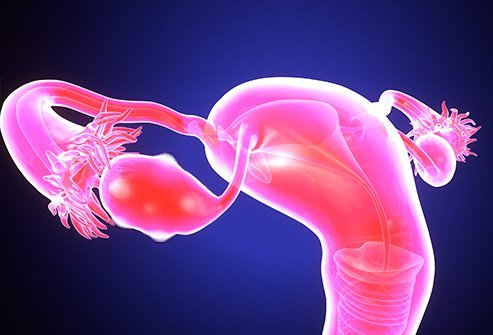
It is impossible to distinguish between an ovarian cyst from a tumor from symptoms alone
Ovarian cysts are fluid-filled sacs that may come and go with your menstrual cycle, while ovarian tumors are solid masses that do not go away on their own.
Ovarian cysts may occasionally cause symptoms that are similar to symptoms of ovarian tumors, such as acute stomach pain, bloating, pain during sex, menstrual abnormalities, and frequent urination. However, it is impossible to distinguish between an ovarian cyst from a tumor from symptoms alone. Typically, neither cause symptoms unless the cysts are very large or the cancer has spread.
If you have symptoms, your doctor may use ultrasonography to confirm whether you have a cyst or a tumor. If it is a cyst, monitoring may be recommended, since the majority of ovarian cysts are benign and usually go away on their own without the need for treatment.
What is the difference between an ovarian cyst and ovarian tumor?
Ovarian cyst
An ovarian cyst has a sac-like shape and is usually filled with fluid. Numerous cysts form as a byproduct of the menstrual cycle and go away by themselves without causing any symptoms. Some forms of ovarian cysts can develop into cancer, although this is really rare. Sometimes, a cyst may grow or press up against a surrounding structure, leading to symptoms such as:
- Sexual discomfort
- Persistent urge to urinate
- Lower pelvic pain that may come and go or be present only during menstruating
- Irregular menstrual cycles
- Abdominal pressure and bloating
Ovarian cysts can rupture and cause sudden, severe pain, though this is uncommon. Ovarian cysts are caused by multiple factors including the menstrual cycle, endometriosis, and benign tumors. There are several types of ovarian cysts, which fall into one of two categories:
- Functional cysts: Functional ovarian cysts are related to the menstrual cycle and often occur in people who have not gone through menopause. Although they may cause symptoms such as pelvic pain, functional cysts are benign and generally harmless. Most do not require treatment and go away within a few months.
- Pathological cysts: Unusual cell proliferation is the source of pathological cysts, which are unrelated to the menstrual cycle. They may appear both before and after menopause. The cells that produce eggs or the cells that line the outside of the ovary are where pathological cysts originate. They may occasionally burst or become quite large, obstructing blood flow to the ovaries. A tiny percentage of pathological cysts are cancerous, although the majority are not, and they are often surgically removed.
Ovarian tumor
An ovarian tumor is an abnormal mass of cells. Like a cyst, a tumor can form in any part of the body. In ovarian cancer, the cells grow abnormally in the ovaries. Recent studies have shown that most ovarian tumors start in the fallopian tubes.
The ovaries contain three types of cells: epithelial, stroma, and germ cells. The type of tumor that develops depends on the cells involved. A tumor can be benign, cancerous, or borderline.
How are ovarian cysts and tumors diagnosed?
A gynecological examination is necessary to diagnose an ovarian cyst or tumor. If a lump or mass in the ovary is detected, further tests may be ordered to rule out the possibility of ovarian cancer. Diagnostic tests may include:
- Blood tests: Blood levels of a protein called cancer-antigen 125 (CA-125) may be elevated in ovarian cancer. CA-125 levels may also be high in benign conditions such as pelvic inflammatory disease and endometriosis. Blood tests can also be used to check the levels of several hormones, such as luteinizing hormone, follicle-stimulating hormone, estradiol, and testosterone.
- Pregnancy test: Used to rule out pregnancy.
- Ultrasound: Uses sound waves to create images and assess the shape, size, location, and mass (whether it is fluid-filled, solid, or mixed).
- Other imaging tests: Computed tomography, magnetic resonance imaging, and positron emission tomography are highly detailed imaging scans your doctor can use to detect ovarian tumors and determine whether they have spread as well as how far they may have spread.
What causes ovarian cancer?
Although the exact cause of ovarian cancer is unknown, family history and genetic mutations are risk factors.
In rare cases, ovarian cancer can arise from some types of ovarian cysts. People who have gone through menopause are more likely to develop cancer from a cyst.
What are symptoms of ovarian cancer?
Ovarian cancer does not initially cause symptoms. When ovarian cancer symptoms do appear, they are often mistaken for those of other, more common diseases.
Ovarian cancer symptoms may include:
- Abdominal bloating or swelling
- Discomfort in the pelvic region
- Fatigue
- Back pain
- Quickly feeling full when eating
- Weight loss
- Changes in bowel habits, such as constipation
- Frequent need to urinate

SLIDESHOW
Signs of Cancer in Women: Symptoms You Can’t Ignore See Slideshow
Medically Reviewed on 7/7/2022
References
https://www.cancer.org/cancer/ovarian-cancer/about/what-is-ovarian-cancer.html
https://www.mayoclinic.org/diseases-conditions/cancer/expert-answers/tumor/faq-20057829
https://www.kucancercenter.org/news-room/blog/2020/08/what-is-ovarian-cancer-symptoms-treatment
https://targetovariancancer.org.uk/about-ovarian-cancer/symptoms/ovarian-cysts
https://moffitt.org/cancers/ovarian-cancer/faqs/difference-between-ovarian-cyst-and-ovarian-cancer/